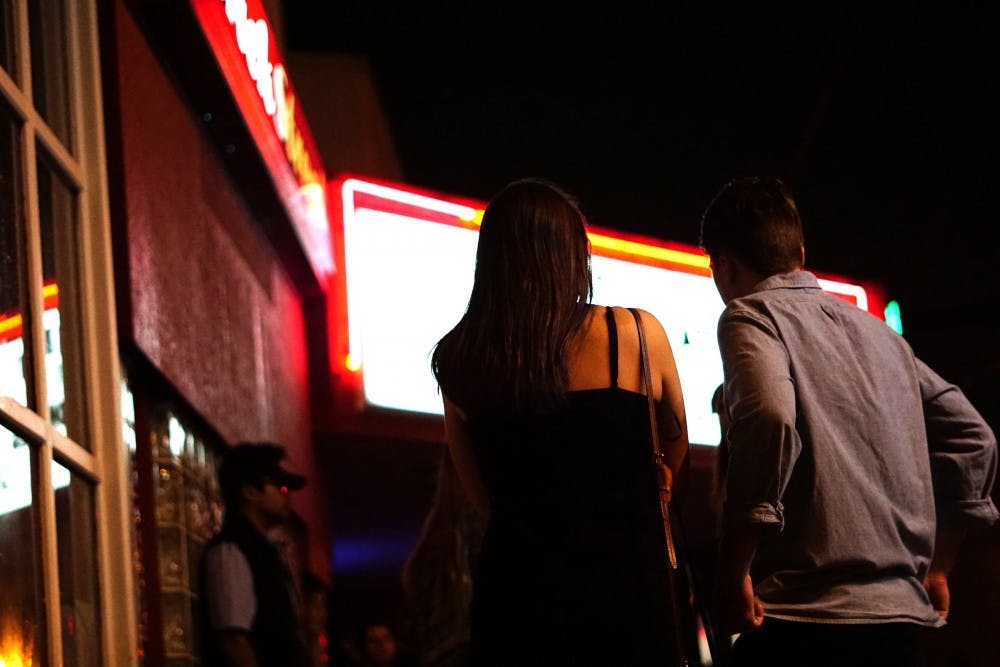The following piece, written by the editorial editors, reflects the majority opinion of the editorial board.
Last Thursday night, in just a three-hour time frame, 11 students were taken McCullough-Hyde Hospital. The occasion, of course, was a Miami tradition, this year called "Blackout Thursday," the first night of the semester that women in sororities are allowed by their chapters to go out to parties and bars Uptown and to drink in general. Over the entire weekend, emergency services in the area responded to 21 calls related to students' alcohol consumption. All of this occurred not a month removed from the death of 18-year-old first-year student Erica Buschick, presumably from excessive alcohol consumption as indicated by an incident report and witness statements from MUPD.
What is most frightening about these events, though, is that they do not stand in isolation. Year after year, students seem to show that their memories are short when it comes to the dangers of overconsumption of alcohol and the consequences, health-related and otherwise, that follow suit. Just last year, Miami junior Tim Fresch lost his life, a tragedy that, as evidenced by the actions over this past weekend and month, seems to have gone ignored. On an aggregate level, a 2015 report by Miami's Alcohol Task Force revealed that 42 percent of first-years reported a blackout due to excessive alcohol consumption during their first year at Miami.
The evidence makes it plain and simple: binge drinking and extreme partying are interwoven in the fabric of Miami's social culture. This is a campus that loves its bars, bashes and booze, and despite all efforts by the university to persuade students not to take part in high risk drinking activities (orientation discussions, online classes, steep academic penalties) this relationship still persists.
At a certain point, the community must understand that more words do not translate into more understanding amongst the student population. Miami is a close community, and it shows that there is a disconnect between tragedy and rationality when two deaths in the past year do not yield more conscientious decision-making amongst students. At a certain point, it falls upon the individual to make better choices for him or herself. There is no class that can be offered, no policy that can be implemented and no article that can be written that will magically change the minds of a meaningful number of students. However, it is possible to facilitate change by calling upon rational and concerned individuals to question the culture of blackout drinking.
This is not a blanket condemnation of all consumption of alcohol and other substances. At least a moderate consumption of alcohol is a nearly inevitable experience for young adults. Nor is this an attack on Greek life, or any other group on campus. To make the case, though, for less extreme alcohol consumption, it is absolutely necessary that members of these communities step up and speak out against the behaviors that they know to be harmful. Administrative influence can only go so far, and in a free society in which individuals are accountable for their own actions, sometimes the influence that students truly need can only come in the form of a friend or other loved one.
Is such a movement even possible? There are already signs to indicate that it is. Last week, Editor-in-Chief James Steinbauer published an editorial on the subject in which he recounted the experience of overhearing students at Kofenya talking about drinking an entire bottle of whiskey. After his piece came out, two of the students came forward and wrote to Steinbauer, applauding him for his recognition of the situation and saying they do not support the culture of binge drinking.
Additionally, the vast majority of the emergency calls over the weekend were made for the sake of 18 or 19 year-olds. While this fact is alarming, if this weekend is an indicator of students' drinking behavior, it shows that the students who understand Miami the least, underclassmen, are the ones that are engaging in the most high-risk drinking. It is therefore encouraging to think that as students grow throughout college, they see through the romanticization of blackout drinking to the truth of its harm. If older individuals can serve as examples and guides for younger students, perhaps that lack of understanding amongst underclassmen can be mitigated.
In any case, the only way for a cultural shift or understanding to occur is if individuals decide to make a change of their own free will and out of their own respect for safety and responsibility. It is a hard situation for younger students, older students and even parents and other adults in the community to face, but then again, the truth often is.

